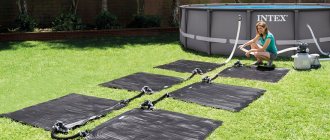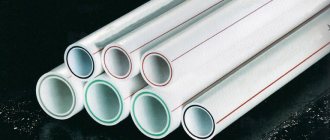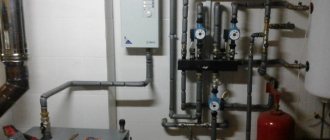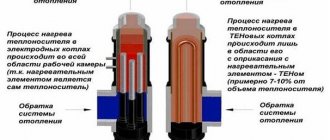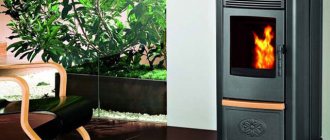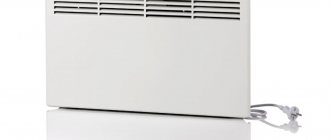Design and principle of operation of the equipment
To rationally reduce energy costs, it is worth understanding the design of the water heater. It is designed as a tank made of stainless steel or steel with a layer of thermal insulation. Magnesium anodes are built into the steel tank to prevent corrosion and electrochemical reactions. A tubular heater with a thermostat is built into the container. At the bottom of the tank there are pipes that supply and discharge water. The thermostat and thermometer are located on the front or bottom panel.
The device works as follows:
- Cold water is poured into the container through a hose with valves - safety and return.
- The heating element turns on automatically and heats the water.
- When the contents of the tank reach the desired temperature, the heater is turned off using a thermostat.
- In models without water intake, the heating level is maintained in auto mode - the heating element turns on and off after a certain time.
- When the hot water tap on the mixer is opened, water is drawn from the top through a special tube.
Boiler device
Important! If the magnesium anode or heating element breaks down, electricity consumption may increase.
Installation and connection of the boiler
Correct installation and wiring of a household appliance plays an important role in saving light. Before installing and turning on the water heater, be sure to read the operating instructions, especially if you decide to do this work yourself. We present several general requirements set out in the manual for common Ariston units:
- to connect the water heater to the electrical network, use a copper cable with a cross-section of 3 x 2.5 mm²;
- the device must be grounded and powered by a separate line with an automatic two-pole switch, and not just insert the plug into the first available socket;
- since the weight of a 50-100 liter boiler is quite large, attach it to a reliable base, for example, to a solid partition;
- models intended for vertical or horizontal installation, mount in the indicated position;
- Connect the unit to the cold and hot water supply network according to the following scheme:
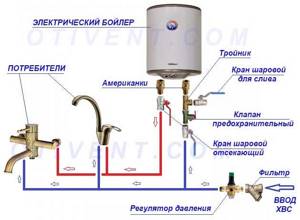
An important role here is played by the non-return valve, which does not allow the container to be emptied into the water supply system in the absence of pressure. It also acts as a fuse - it releases water that expands in case of overheating. Therefore, from the “spout” of the valve, you should pass a flexible tube into a plastic bottle or direct it into the sewer.
Above the valve you need to install a tee with an additional tap for emptying. If the boiler is not used for a long time or there is a danger of freezing, then the water must be drained, and without a tap this procedure becomes much more complicated. For ease of dismantling the apparatus, the pipes are connected to the fittings through American connections.
Advice. When it is not possible to attach the water heater to a solid wall, make a simple metal stand from 2 pipes and a strip, as shown in the photo.
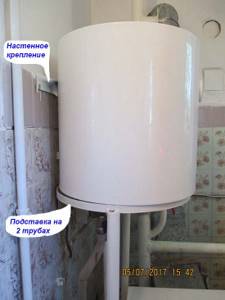
Before turning on the boiler, you need to open the nearest hot water tap in the apartment and fill the tank with cold water until it flows from the mixer. Then close the valve and put the device into operation.
Determining the efficiency of a new water heater
How to start using your new boiler economically and correctly? Experts focus on determining its energy efficiency when purchasing.
General rules
Before purchasing equipment, the user needs:
- compare the energy efficiency of expensive and budget models in the store to establish the return on investment of the equipment;
- clarify that the energy efficiency class includes efficiency, losses per hour during heating and maintaining temperature, circulation. Information is indicated in the manufacturer's booklet;
- take into account the displacement of the container, the operating speed of the heating element, the type of installation to clarify the total costs.
Interesting to know! On European boiler models, energy efficiency has been indicated since 2013, on American ones - since 2009.
Calculation of annual operating costs
For calculations, you will need information about the energy efficiency class, type and cost of the coolant. Further calculations are performed using the formula:
- for gas models, the number of days per year is multiplied by energy efficiency and the cost of a cubic meter of gas;
- for electric boilers, the number of days per year is multiplied by energy efficiency and the cost of kW/hour.
Interesting to know! The DOE test for water heaters takes into account cold (15 degrees) and hot (60 degrees) temperatures and determines the unit's performance for a family of 3 as 240 liters per day.
Heating element power as a saving factor
The greater the power of the heating element, the faster the water will heat up. Keep in mind that in houses with a single-phase wiring diagram, from 7 to 10 kW of power are allocated. A high-performance water heater will lead to increased load on the network, huge energy costs and tripping of circuit breakers.
Economical boilers
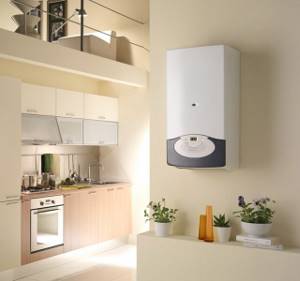
If you want to save electricity, a flow-through unit was created just for you. It does not limit the owner’s volume of water, consumes little electricity, but you won’t be able to splash around in the bathtub. At the same time, significant network power is required, which not every private home can afford.
Among economical water heaters, storage water heaters from Ariston, designed for 50 liters and up to 200 liters inclusive, are breaking records. Following the leader of the rating are the famous Electrolux, Termex, Aosis.
By the way, it is not at all necessary to use an electric unit - you can install a gas water heater. A penny saves a ruble - remember this saying when using boilers sparingly.
We recommend reading on the topic:
- How to choose the right storage water heater?
- How to clean a boiler from scale with your own hands?
- How to drain water from an Ariston 80 liter water heater?
- How can you properly drain water from a boiler?
How to use a boiler economically?
You need to save with the water heater turned on during its operation, and not choose the most budget model. Users give a lot of advice on how to really save energy consumption on a household boiler. Below is the TOP of the most effective ones.
Installation and connection for economical operation
There are a few simple tricks:
- choosing a suitable location for installation. The long length of the pipe from the bathtub to the sink leads to heat dissipation. In this case, more kilowatts are wasted;
- activity settings. You can select the periods of activity and restart of the heating element. You won't be able to save much, but it's a good start;
- Preventative cleaning of the heater. After descaling, the heating element will generate a sufficient amount of heat with minimal energy consumption;
- one temperature level. The maximum mode provides fast heating, but increases energy consumption. By selecting a heating program, you can reduce the amount of energy consumed.
Important! In older models of boilers, efficiency drops in heating mode and they consume more energy.
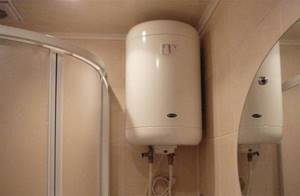
Choosing a suitable location
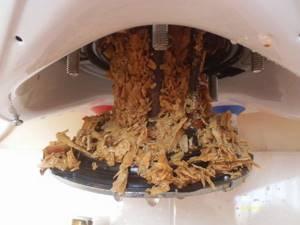
Don't forget about cleaning the boiler!

Adjust the temperature
Reducing hot water consumption
Is it just about energy resources? You will not understand how to use a household boiler economically if you do not calculate your water consumption. To increase the temperature of 1 liter of water, 0.001 kW/h of heater power is needed. But it’s easy to save money on this too.
Switching on according to schedule
You should only start the boiler when you really need hot water. It's better to wait for the device to heat up than to pay huge bills. The switching schedule depends on the tank volume:
- water heaters with a capacity of up to 50 liters can be turned off before leaving home and turned on upon return. The device spends 1-1.5 hours heating up, then simply keeps the water hot;
- 80-100 liter boilers take longer to heat up and consume a large amount of energy. It is enough to set the temperature to a minimum and turn on standby mode.
Advice! Buy and install a timer - it will turn on the heating 2 times a day at the selected time.
Preheating
How can you save money on a running boiler in winter? When the water temperature in central communications is 6-10 degrees, more energy is required for heating. To reduce costs, you need to fill a 50-100 liter container with warm water and place it in the boiler room. It will heat up in 8-10 hours.
Important! The method is suitable only for residents of private houses and involves the use of alternative heat sources.
Shower heads
Users who have studied how best to save wasted energy on a household boiler are advised to choose the right shower heads. They consume 10 liters of water per minute and are:
- classic, creating a water trail;
- with a soft jet, suitable for rooms with high humidity.
Outdated nozzles that consume about 20 liters of water per minute need to be replaced. First you need to time the time it takes to fill a three-liter jar. If it exceeds 20 seconds, buy a new nozzle.
Aerators and water flow limiters
Aerators are made in the form of a special nozzle. A kitchen element consumes 8 liters of water per minute, and one intended for a bathroom consumes from 5 to 15 liters per minute. If you install a flow limiter, you can spend no more than 40-75% of hot water, or 3 liters per minute.
Interesting to know! A minimum of 100 liters of water is spent to set up a bathroom, and no more than 30 liters for a 5-minute shower.
Disconnecting the boiler from the power supply
How to use an electric boiler correctly and safely, but at the same time save money? Turn it off from the network using the button at night. The device works like a thermos, so the water will cool slowly. Unplugging is necessary if you are leaving home for a long time.
Saving rules when using a boiler
To reduce your water heater's electricity consumption, consider the following rules:
- Initially, choose the best place to install the tank - the pipeline should not be very long. Water, passing through a long channel, quickly cools, which means that kilowatts are again needed for heating.
- Set the operating mode - there should be a period of downtime and operation.
- Carry out preventive maintenance related to the operation of the heating component. The heating element should be regularly descaled; this is the only way to increase the thermal power; thanks to periodic cleaning, it is possible to optimize the efficiency of the installation.
Energy efficient operation of water heaters
To avoid overpayments for utilities, you need to figure out how to properly and effectively use a household boiler to rationally save water and electricity. There are several ways.
Waste water heat recovery
Between 80 and 90% of hot water's energy is lost to the drain. Installing the system allows you to use the heat of the waste liquid to heat the cold one. In apartments and houses it is advisable to use 2 types of equipment:
- with buffer capacity. Justified when using a washing machine or dishwasher. The effluent passes through a spiral tube in the tank, and its heat warms the water, which is pushed upward. The water returns to the boiler in a preheated state;
- without buffer capacity. A copper heat exchanger in the form of a spiral is wound onto the sewer sections. Preheated water also returns through it.
Important! Depending on the intensity of use, the payback period for such equipment is 2.5-7 years.
How to clean the heating element with your own hands
The dirtier the heating element in the boiler, the less its functionality. Electricity absorbs the layer of scale, removing it, the device is updated and works with renewed vigor. To clean the heating element with your own hands, follow the step-by-step instructions:
- Drain the system.
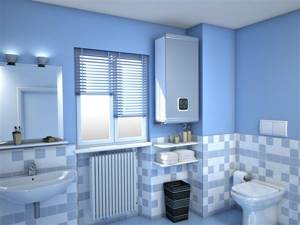
- Disconnect from the power supply and dismantle the heating element.
- Add 1.5 liters of water to 15 grams of citric acid and mix.
- Place the heating element in the prepared solution.
- When the heating element is clean, put it back into the housing.
- All that remains is to connect the product to the water supply and provide power.
Reducing DHW costs
Choosing a location for installation
Selecting the equipment operating mode
Cleaning the heating element
In this regard, many are looking for a way to at least slightly reduce consumption so that the availability of hot water in the house does not cost a pretty penny. Fortunately, there are several simple methods for this that are absolutely not contrary to the law. To use them, you do not need any specific knowledge or ability to work with electrical engineering - everything is quite simple.
The first thing you need to do is to choose the right place to install your new acquisition. The second is to “play” a little with the operating modes of the equipment, choosing the most profitable scheme. Third, pay close attention to the condition of the heating element. But let's talk about everything in more detail.
Choosing a location for installation
As you know, the boiler is connected to water collection points - that is, for example, to mixers - using pipes. When you do not use hot water for several hours, when you open the tap, slightly warm liquid will flow first, and only then you will get the desired temperature. The explanation for this is very simple. Water that was heated by the boiler, but not released through the tap, remains in the section of the pipeline connecting them. During the period of inactivity, it cools down, and when the mixer is opened, it drains.
Thus, you lose some amount of electricity that was spent on heating this volume in vain. The longer the pipe leading from the water heater to the nearest water point, the more significant these losses will be. As an approximate indicator, you can take 400 ml of water for each meter of pipeline.
To avoid these, albeit not too large, losses, there is a simple way. Initially install the boiler so that the pipe section between it and the nearest (or most frequently used) mixer is as short as possible. For example, if a water heater serves both a bathroom and a kitchen, then it is advisable to place it between them, and so that the path of water to the second room is shorter - after all, the water is usually turned on there much more often.
Of course, the layout does not always allow for such placement. Either there is not enough space for this in the desired segment of the home, or the heating equipment simply does not fit into the interior. But you can find a way out of the situation in this case too.
To keep the water in the pipe from cooling as long as possible, you need to insulate the pipe. For this purpose, there are many modern materials that significantly reduce heat loss and are easy to install. You can simply secure them to the pipe with tape. Thus, you will, although not by much, reduce wasted energy consumption, since the water after inactivity will be quite usable.
Selecting the equipment operating mode
Very often you can hear disputes about how exactly to use a water heater in order to save the maximum amount of electrical resources. Typically, there are two opinions expressed in such debates. Some people find that the best way to save money is to turn off the boiler when it is not in use - usually at night. The argument is based on the fact that when the device is turned on, it periodically heats the water to the set level, thereby wasting energy.
What temperature should I set on the boiler?
The optimal temperature, and therefore the real economical mode of operation of the boiler, is considered to be 50 - 55 0 C. This temperature is comfortable for taking a shower, washing hands or washing dishes. Also, when the temperature drops, the boiler will not spend a lot of energy heating the water. It is not recommended to lower the water temperature below, as fungus may develop. But getting it out is still a problem.
Now we know how to make a boiler truly economical. Turn it off only when you are away for a long time, otherwise it takes more energy to heat the water than to maintain its temperature.
A boiler, or electric water heater, is a device for providing housing with hot water, which has become widespread due to its ease of use. The advantage is that installation permission is not required, but the disadvantage is that it consumes electricity. Energy savings are possible if the boiler is operated correctly and several rules are followed to reduce energy consumption.
